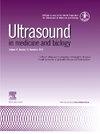基于超声的放射组学特征与机器学习鉴别小儿周围神经母细胞肿瘤预后亚群:一项回顾性研究。
IF 2.4
3区 医学
Q2 ACOUSTICS
引用次数: 0
摘要
目的:基于超声放射组学特征和临床特点,构建和选择更好的小儿神经母细胞肿瘤预后亚群模型。方法:将73例神经母细胞肿瘤患儿数据分为训练组和验证组。数据1包含受试者放射组学特征和临床特征,数据2包含放射组学特征。在机器学习的帮助下,对数据1和数据2分别构建了5个模型。选择精度和曲线下面积最高的模型分别作为数据1和数据2的组合模型和放射组学模型。然后通过进一步的比较,从模型中选择一个较优的模型。结果:选择数据1的极端梯度增强模型作为组合模型,选择数据2的极端梯度增强模型作为放射组学模型。验证组联合模型和放射组学模型的曲线下面积分别为0.941和0.918 (p = 0.6906)。放射组学模型的平衡精度、kappa值和F1评分(分别为0.9045、0.8091和0.9091)高于联合模型(分别为0.8545、0.7123和0.8696)。放射组学模型的前8个特征包括5个一阶统计特征和3个纹理特征,均为高维特征。结论:我们的研究证明放射组学模型在鉴别小儿神经母细胞肿瘤预后亚群方面优于联合模型。此外,我们发现基于高维超声的放射组学特征优于其他特征和临床特征。本文章由计算机程序翻译,如有差异,请以英文原文为准。
Ultrasonic-Based Radiomics Signature With Machine Learning for Differentiating Prognostic Subsets of Pediatric Peripheral Neuroblastic Tumors: A Retrospective Study
Objective
To construct and select a better model based on ultrasonic-based radiomics features and clinical characteristics for prognostic subsets of pediatric neuroblastic tumors.
Methods
Data from 73 children with neuroblastic tumors were included and divided into a training group and a validation group. Data 1 contained the subjects’ radiomics features and clinical characteristics, while data 2 contained radiomics features. With the help of machine learning, five models were constructed for data 1 and data 2, respectively. The model with the highest accuracy and area under the curve was selected as the combined model and radiomics model for data 1 and data 2, respectively. A superior model was then chosen from the models after further comparison.
Results
The extreme gradient-boosting model for data 1 was chosen as the combined model and the extreme gradient-boosting model for data 2 was chosen as the radiomics model. The area under the curve of the combined and radiomics models in the validation group was 0.941 and 0.918 (p = 0.6906). The balanced accuracy, kappa value and F1 score of the radiomics model (0.9045, 0.8091 and 0.9091, respectively) were higher than those of the combined model (0.8545, 0.7123 and 0.8696, respectively). The top eight features of the radiomics model included five first-order statistical features and three textural features, all of which were high-dimensional features.
Conclusion
Our study proved that the radiomics model outperformed the combined model at differentiating prognostic subsets of pediatric neuroblastic tumors. Additionally, we found that high-dimensional ultrasonic-based radiomics features surpassed other features and clinical characteristics.
求助全文
通过发布文献求助,成功后即可免费获取论文全文。
去求助
来源期刊
CiteScore
6.20
自引率
6.90%
发文量
325
审稿时长
70 days
期刊介绍:
Ultrasound in Medicine and Biology is the official journal of the World Federation for Ultrasound in Medicine and Biology. The journal publishes original contributions that demonstrate a novel application of an existing ultrasound technology in clinical diagnostic, interventional and therapeutic applications, new and improved clinical techniques, the physics, engineering and technology of ultrasound in medicine and biology, and the interactions between ultrasound and biological systems, including bioeffects. Papers that simply utilize standard diagnostic ultrasound as a measuring tool will be considered out of scope. Extended critical reviews of subjects of contemporary interest in the field are also published, in addition to occasional editorial articles, clinical and technical notes, book reviews, letters to the editor and a calendar of forthcoming meetings. It is the aim of the journal fully to meet the information and publication requirements of the clinicians, scientists, engineers and other professionals who constitute the biomedical ultrasonic community.

 求助内容:
求助内容: 应助结果提醒方式:
应助结果提醒方式:


